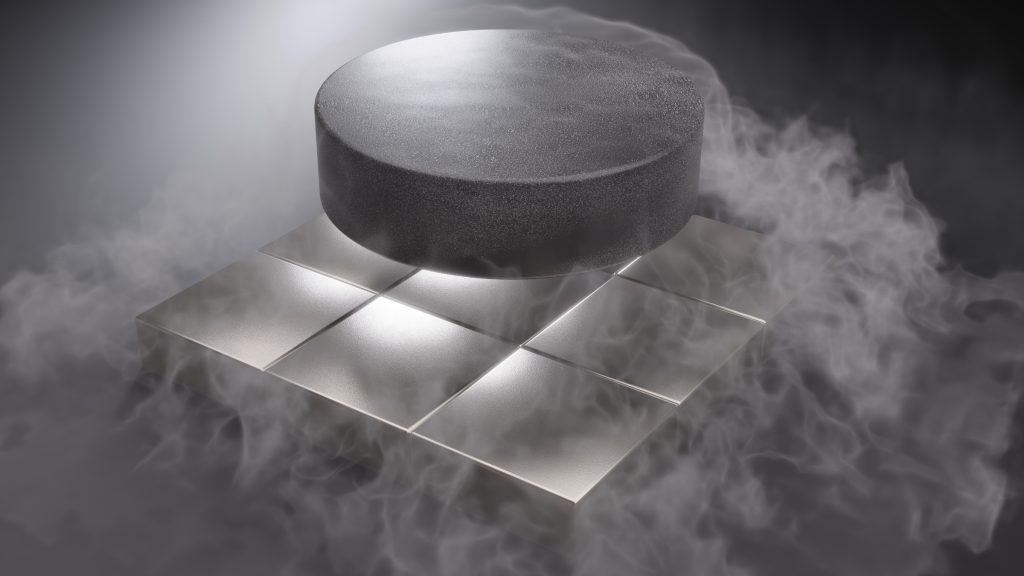
Scientists have identified the world’s first unconventional superconductor, miassite which is a mineral capable of exhibiting superconducting properties when grown in a lab setting.
- Unconventional superconductors exhibit higher critical temperatures.
- Theoretical applications of miassite in chip making include enhancing chip performance and lifespan due to its hardness and heat resistance.
In superconductivity news, Scientists have identified miassite, a mineral capable of exhibiting superconducting properties when grown in a lab setting.
Their research, published in Communications Materials, is a significant step in superconductivity. It names miassite as an unconventional superconductor. The first of its kind. It has the potential to open doors to more sustainable and economically viable superconductor-based technologies in the future.
Some materials can conduct electricity without resistance, like mercury. That’s superconductivity. This ability has a lot of practical implications. Superconductors can significantly reduce power losses during electricity distribution. That is especially important in superconducting power cables, as they transmit energy over long distances with minimal loss. MRI machines also have superconducting magnets that produce strong magnetic fields necessary for imaging soft tissues in the human body with exceptional clarity and detail.
Now, if this ability can be explained through the Bardeen-Cooper-Schrieffer (BCS) theory, which describes superconductivity as a microscopic effect caused by a condensation of Cooper pairs, then the superconductor is conventional. Other than that, the material is categorized as unconventional.
While conventional superconductors exhibit low critical temperatures, which limits widespread applications, unconventional superconductors offer much higher critical temperatures. Hence, scientists’ interest in their potential for various technological advancements.
In an official statement, Ruslan Prozorov, a scientist at the Ames Lab, explained that superconductors are not naturally found in nature because most are metals and tend to react with other elements. One being oxygen. He points out that “Intuitively, you think that [miassite, having a complex chemical formula,] is something which is produced deliberately during a focused search, and it cannot possibly exist in nature,” said Prozorov, “But it turns out it does.” But despite naturally occurring near the Miass River in Russia, miassite typically does not form well-defined crystals.
The research on miassite is still in its infancy. But, theoretically speaking, and based on what we know so far, it could be used in chip making. It’s a hard mineral with high heat resistance.
Using this material may enhance a chip’s performance. one, a longer lifespan. its hardness could make the chip more resistant to physical damage during manufacturing and everyday use. Two, miassite chips could handle higher operating temperatures, which comes in handy as chips keep getting smaller. It may allow denser packing of transistors, leading to more powerful chips in smaller packages. And finally, three, miassite’s complex composition offers a possibility for future discoveries. Research might reveal ways to manipulate its structure to achieve specific electrical properties desirable for chips.
As things stand right now, there’s this race to produce the best chips. The main runners are China and the United States. Things between the two countries have been intense as of late with all the artificial intelligence advancements and the U.S.’s insistence on keeping American-made chips out of China’s hands. If miassite is proven to enhance chip performance, the rivals will chomp at the bits to get it. The issue here, however, is you can only find miassite in Chelyabinsk Oblast, Russia, for now.
Considering the U.S. and Russia’s history, the latter will most probably not allow the former to mine it. But it might allow China to do so. In fact, China and Russia are working on strengthening their bonds. There’s BRICS and there’s their plan for a nuclear reactor on the moon, just to name some of the new developments in their working relationship.
Inside Telecom provides you with an extensive list of content covering all aspects of the tech industry. Keep an eye on our Tech sections to stay informed and up-to-date with our daily articles.